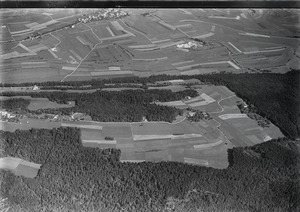Coffrane facts for kids
Quick facts for kids
Coffrane
|
||
|---|---|---|
|
||
| Country | Switzerland | |
| Canton | Neuchâtel | |
| District | Val-de-Ruz | |
| Area | ||
| • Total | 6.49 km2 (2.51 sq mi) | |
| Elevation | 803 m (2,635 ft) | |
| Population
(December 2011)
|
||
| • Total | 695 | |
| • Density | 107.09/km2 (277.4/sq mi) | |
| Postal code |
2207
|
|
| Surrounded by | Boudevilliers, Corcelles-Cormondrèche, La Sagne, Les Geneveys-sur-Coffrane, Montmollin, Peseux, Valangin | |
Coffrane was once a small town, also known as a municipality, located in the Val-de-Ruz area of Neuchâtel, a canton (like a state) in Switzerland.
On January 1, 2013, Coffrane joined with many other nearby towns. These included Boudevilliers, Cernier, Chézard-Saint-Martin, Dombresson, Engollon, Fenin-Vilars-Saules, Fontainemelon, Fontaines, Les Geneveys-sur-Coffrane, Les Hauts-Geneveys, Montmollin, Le Pâquier, Savagnier, and Villiers. They all became part of a new, larger municipality called Val-de-Ruz.
Contents
History of Coffrane
Coffrane is a very old place. It was first written about in the year 1092. Back then, its name was de Cusfrano.
Coffrane was also the location of an important event in 1296. This was the Battle of Coffrane.
Geography and Nature
Coffrane covered an area of about 6.5 square kilometers (2.5 square miles) in 2009. A large part of this land, about 63.3%, was used for farming. Forests covered another 26.3% of the area.
About 10.5% of Coffrane's land was built up with buildings and roads. A very small part, about 0.3%, was covered by rivers or lakes. The rest was land that couldn't be used for farming or building.
Most of the built-up areas were homes and other buildings. Roads and transportation also took up some space. The forests in Coffrane were mostly dense woods. Some areas had small groups of trees or orchards. For farming, people grew crops, and there were also pastures for animals.
The former town of Coffrane is found in the Val-de-Ruz area. It is located along the road that connects Rochefort and Saint-Imier.
Coffrane's Coat of Arms
Every town has a special symbol called a coat of arms. Coffrane's coat of arms is described as: Argent, from a base Vert issuant an Ash-tree proper. This means it shows a green base with a natural ash tree growing from it, all on a silver background.
People and Population
In 2011, Coffrane had a population of 695 people. In 2008, about 12.9% of the people living there were foreign nationals. Over ten years, from 2000 to 2010, the number of people in Coffrane grew by about 2%. This growth was mostly because more babies were born than people died.
Most people in Coffrane speak French. In 2000, about 91.9% of the population spoke French as their main language. Italian was the second most common language, spoken by 2.4% of people. German was third, spoken by 1.8%.
In 2008, the population was almost evenly split between males and females. About 50.6% were male and 49.4% were female. Most people living in Coffrane in 2000 were born either in Coffrane itself or somewhere else in the same canton. About 15.7% were born outside of Switzerland.
In 2000, children and teenagers (up to 19 years old) made up about 29.8% of the population. Adults (20 to 64 years old) were 56.8%, and seniors (over 64 years old) were 13.4%.
Most households in Coffrane had an average of 2.6 people. In 2000, there were 238 private homes. About 90.8% of these homes were lived in all the time.
Economy and Jobs
In 2010, Coffrane had a low unemployment rate of 3.1%. This means most people who wanted to work had jobs.
In 2008, there were different types of jobs in Coffrane:
- Primary sector: This includes jobs like farming. There were 21 people working in this area.
- Secondary sector: These jobs involve making things, like in factories or construction. There were 10 people working here.
- Tertiary sector: This covers service jobs, like in shops, offices, or schools. There were 47 people working in this sector.
Overall, 303 people living in Coffrane had jobs. About 44.2% of these workers were female.
Many people who lived in Coffrane traveled to other towns for work. In 2000, 232 people left Coffrane to work elsewhere, while only 30 people came into Coffrane for work. Most people, about 68.6%, used a private car to get to work. About 10.6% used public transportation.
Religion
Based on information from 2000, about 21.2% of the people in Coffrane were Roman Catholic. About 51.1% belonged to the Swiss Reformed Church. A small number of people belonged to other Christian churches or were Islamic. About 17.6% of the population said they did not belong to any church.
Education
In Coffrane, many people have a good education. In 2000, about 37.5% of the population had finished upper secondary education, which is like high school. About 10.8% had gone on to higher education, like a university.
In the canton of Neuchâtel, most towns offer two years of kindergarten. After that, there are five years of required primary school. Then, students go to larger secondary schools for four more years.
Coffrane shared its kindergarten with the nearby towns of Les Geneveys-sur-Coffrane and Montmollin. The primary school was also shared with Les Geneveys-sur-Coffrane. In the 2010-2011 school year, there were 3 kindergarten classes with 43 students. There were also 2 primary classes with 37 students.
In 2000, most students from Coffrane, about 67 of them, went to schools outside the town. Only one student from another town came to school in Coffrane.
See also

- In Spanish: Coffrane para niños





